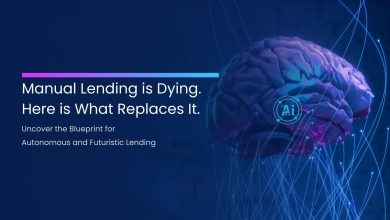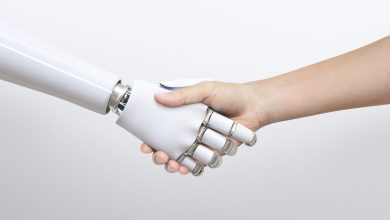
As generative AI takes center stage, European startups are facing a deeper, less visible crisis: a shortage of talent who can build the infrastructure behind the magic of artificial intelligence.
In this interview, Daniel Bathurst, Chief Product Officer at Nscale unpacks what’s really going wrong and what needs to change:
“Talent is very centralized. There is not much access to the right computers, although there is a huge drive for open source technology. But it is very hard to find AI talent, and that needs to change to ease the huge imbalance within the industry between the hyperscalers and the upcoming builders.”
Understanding the AI Talent Gap
When we talk about AI talent, most of the conversation revolves around model engineers, prompt wizards, or machine learning generalists.
But beneath the surface of Europe’s AI ecosystem, there is a more critical shortage. It’s one that rarely makes headlines, yet threatens to halt progress for startups across the continent, and that’s the shortage of AI infrastructure engineering talent.
Artificial intelligence is relatively new. Five years ago, the AI rush was nonexistent. No GPTs or chatbots or extended uses of LLMs where used as it’s used today. ChatGPT, which can be said to be a key player in the acceleration of AI technology and machine learning, was barely launched in November 2022. Since then, it has been a dizzying array of developments.
Artificial intelligence powers an array of startups now, and added AI-powered features have been added to software products to serve users faster and scale more efficiently.
Now, videos with sound and voice can be generated with a single prompt, and tons of data can now be analysed more easily. All these are possible with real engineered AI-powered infrastructure and machine learning systems. Without them, even the most advanced models are just research papers and prototypes.
Yet in Europe, this talent pool for this technology is thin, and that’s where the AI talent crunch begins.
According to Daniel Bathurst, the first challenge is that many candidates label themselves as AI engineers when their experience is limited to using end-user APIs from providers like OpenAI.
They often don’t have the deep technical understanding needed to build these systems from scratch. Even though the technology is growing at unprecedented rates, it’s still relatively now, and most developers haven’t worked in AI engineering for most of their careers.
Daniel Bathurst has faced this brutal situation himself as Chief Product Officer at Nscale, an AI technology company that provides cost-effective and high-performance infrastructure for AI startups. Nscale developed their own data centers, hardware, and software to help companies who want to build generative AI models or leverage existing models.
At first, Nscale heavily relied on their existing network to find new team members. But as they grew, Daniel and the team had to look beyond their network and rely on recruiters. That was when Bathurst noticed just how severe the shortage of talent in the space was, and how hard it was to find talents that could do the work.
Factors That Lead to AI Talent Shortage
Daniel Bathurst discusses some factors that lead to this shortage, including non-updated universities’ curricula and poor access to infrastructure.
The outdated university curricula in Europe contributes to the hundreds of computer science graduates who may be considered under-trained in the new AI age. Most computer science grads are trained on how to build software, but not in AI or high-performance computing.
This poses a problem for recruiters and startups building in the AI industry. But academia doesn’t take all the blame for this. AI technology requires a lot of capital to understand, develop, and scale. Barthurst explains,
“It’s a relatively new field. But more importantly, it’s also a function of scale. To understand this technology deeply, you need access to a lot of compute, think tens of thousands of GPUs. That kind of access is expensive and not feasible for most universities.
So the issue isn’t just the curriculum itself; it’s the lack of infrastructure to support that learning. With traditional software engineering, students can code from their laptops. But with AI infrastructure, you need access to supercomputers.
Even where universities have these resources, there’s usually a long waitlist just for researchers and PhD students. That leaves undergraduates and even master’s students with limited exposure to real-world tools and scenarios.”
So for Bathurst, the issue isn’t just the curriculum itself. It’s an effect of the lack of infrastructure in academic institutions, which is the basic foundation for acquiring most knowledge and skills.
Individuals can’t fully learn large-scale distributed training without the hardware to support it, even though there are some promising moves, like NVIDIA’s new compact supercomputers. However, Europe is still far from widespread access. For universities to adequately prepare students for this field, they need better infrastructure and access to capital.
What AI Skills Are Exactly Missing?
While large language models and API-based services dominate AI’s public narrative, the foundational layers of AI, distributed computing, orchestration tools, and high-performance networking are growing more complex and less accessible.
Unlike app development, where a laptop and WiFi can get one far, AI infrastructure work demands access to high-end GPUs, large-scale clusters, and battle-tested experience. But most universities do not have the computing infrastructure for students even to begin learning core AI engineering. It is not a skill gap but an exposure gap.
There’s also a fundamental disconnect between what academia teaches and what the industry needs. While computer science programs still emphasize theory-heavy curricula, today’s AI workloads demand engineers who understand Slurm scheduling, Kubernetes on GPU nodes, and multi-node training performance optimization. None of these things are taught at scale.
This lack of hands-on training is disadvantageous for the industry because startups can’t just “hire junior and train up.” They’re looking for people who’ve already built and scaled GPU infrastructure (a rare breed, especially in Europe), because the AI race is speedy and the competition is cutthroat.
So, what are the key skills an AI infrastructure specialist should have?
For Daniel Barthurst, there are two main aspects: physical infrastructure and software orchestration. What is mostly missing is a full-stack AI infrastructure mindset. The kind of thinking that blends software engineering, systems architecture, data engineering, and machine learning into one cohesive skillset.
“You need people who understand container orchestration, GPU clusters, distributed training, model serving, and inference optimization, and who can also adapt these systems to the real-world constraints of a startup,” says Bathurst, “That’s very different from fine tuning a foundation model or building an AI feature with a plug-and-play API”
This kind of engineering doesn’t just require technical know-how. It also demands a systems-thinking mindset, that is being able to design and maintain scalable infrastructure that enables teams to move fast without breaking things. Yet, many engineers coming out of school or from corporate software jobs haven’t been trained to think this way.
The result? European startups are increasingly reliant on hyperscalers like Google, AWS, and Microsoft, not just for compute but for talent via their tooling. This talent gap creates a dependency loop. Startups do not have the in-house capacity to build or manage large-scale AI workloads, so they outsource the work or the infrastructure to cloud giants, which further narrows the talent pipeline and deepens the imbalance.
Read- Artificial Intelligence in Fintech: How AI and Machine Learning is Powering Fraud Management
How AI Startups Are Impacted by The Crunch
The talent crunch is slowing down infrastructure building but strides have to be made, as big players aren’t slowing down for the “undergods who are competitors.”
Bathurst paints the picture, “It’s definitely slowing down speed to market. While open-source technology has made some aspects more accessible, computing resources or hardware and talent are still concentrated in a few big players like OpenAI, Anthropic, and Google’s DeepMind.”
For startups, the lack of access to these resources and people means they risk falling behind.
“At Nscale, we initially struggled to compete with these giants. It’s getting better now as our brand grows and we are having conversations with very solid engineers. However, it’s still tough, especially for European startups trying to keep up with the U.S. or China, where investment and infrastructure are stronger.”
Bathurst mentioned that the biggest barrier for startups is access to funds and investment from governments and incubators. Better investment means that startups can provide better computers to engineers and access to all the tools that they need.
Maintaining these talents are costly, as AI engineers typically want access to high-end computers to perform leading-edge tasks. These tools can easily be offered by the big players or more advanced regions and this is why startups need to try to provide access to these supercomputers and the freedom to be able to innovate.
Aside from internal costs, the scarce AI talents are being chased down by the big players like Meta, Google, and Sam Altman’s OpenAI. News recently surfaced that Google was keeping its top AI engineers on payroll with little to no tasks assigned, so they won’t have to join other AI rivals.
This act lessens the talent pool, as the scarce talents are increasingly being poached with mouth-watering offers, even from other regions. It also makes it a global issue, as most startups must compete with FAANG remunerations or salaries. If startups can’t offer that, they lose them, especially if they are talents who do not need to be trained.
But regions like the U.S. and China have more mature ecosystems, better funding, and deeper access to both capital and computing infrastructure. European startups are competing in the same AI race but with fewer GPUs, fewer engineers, and less access to institutional knowledge. This lack widens the innovation gap and limits Europe’s ability to produce breakout AI companies at the scale of OpenAI, Hugging Face, or DeepMind.
Startups thrive on agility, moving fast, iterating quicker, and shipping faster than incumbents. But without in-house AI infrastructure talent, many are forced to slow down. Instead of building custom infrastructure tailored to their product, they often rely on third-party services or hyperscalers’ out-of-the-box solutions, which limits flexibility and differentiation.
Even when startups secure funding or identify product opportunities, execution becomes the roadblock. Many brilliant ideas stall in the prototype stage because there’s no one on the team who can build, deploy, or scale the infrastructure required.
But maybe one of the most subtle but damaging effects of the AI talent crunch is that it limits what startups even attempt to build. Without infra-savvy engineers, founders shy away from ambitious ideas, distributed training systems, custom model serving layers, or real-time AI pipelines, because they simply don’t have the bandwidth to support them. Instead, we see more wrapper apps, plug-and-play interfaces, and low-compute features. Valuable, yes, but limited in scope. This dynamic shrinks the frontier of AI innovation and leaves too much of the creative heavy lifting to Silicon Valley in the US.
On future innovations, Daniel Bathurst believes that AI factories will be the next big thing. The term “AI factories” refers to purpose-built data centers and cloud infrastructures designed to support large-scale AI adoption. As AI technology continues to grow, the energy consumption and heat generation from these facilities are expected to double over the next two to three years. This will drive innovation in energy efficiency and thermal management.
In terms of application, AI will play an increasingly central role in areas like robotics and autonomous vehicles. The skill sets required to support this shift will evolve beyond traditional software or hardware expertise. Future professionals will need a hybrid understanding of both disciplines—especially those involved in building and managing AI systems.
As AI systems become more complex, there will be a growing demand for specialists who can manage their operational challenges, such as power and cooling requirements. Additionally, there will be increased specialisation in how AI is applied across domains like robotics and transportation.
Read: Why Traditional Banks Should Stop Trying to Innovate (and Focus on Partnerships Instead)
How Can Startups Attract Top AI Talent?
Daniel Bathurst has made it clear. European AI startups need more funding from governments and accelerators. But solutions have to be applied from the ground up, starting with academia. Universities have got to do something about the outdated curricula.
Bathurst advised:
“Universities absolutely need to refresh their curricula, but it’s not just about updating slides. They need to partner with industry players, especially those with computing resources, to create practical learning opportunities.”
It may not be a speedy recovery path, but a path that will lead to long-term success. Building labs, launching joint research initiatives, giving students access to cloud credits, or even shared supercomputing resources, are the kinds of initiatives that will make a difference in the long run.
“But I also empathize with universities. The pace of AI innovation is brutal. Designing a curriculum that remains relevant even for a year is extremely difficult. That’s why partnerships are vital”, Bathurst recommends.
As a core talent retention strategy, Daniel Bathurst recommends going unconventional. AI talents are boundary breakers and naturally crave freedom. He encourages startups to give room for creative freedom and innovation.
“AI engineers want to build on powerful machines, they want to innovate, and they want to solve complex problems at scale. If you can’t offer that, you’ll lose them,” says Bathurst. He also believes that recruiters should be more creative when searching for AI talent. “Go onto Discord, Telegram, X, Reddit, and even tech meetups or events.”
Recruiters have a better chance of attracting or meeting the kind of talent that they need, especially when they pitch the idea or startup creatively. Daniel even suggests some events, like Nvidia GTC Europe, slated for June 10-12, London Tech Week also coming up, June 9–13, and other HPC events
Daniel Bathurst also suggests that startups should go fully remote to allow more cross-border collaborations. “Honestly, I don’t care if someone’s working from the moon, although I’d recommend somewhere with oxygen, ” he said light-heartedly.
To Daniel, what matters is impact. Going remote can enable startups to tap into incredible talent from Australia, New Zealand, Canada, and anywhere in the world. It’s also a great way to nurture local talent whilst learning from global peers.
Final Thoughts
Artificial intelligence as a field is vast and rapidly growing, which increases the demand for skilled talent. This talent will only continue to widen as competition increases, especially if new talents are not taught with updated curricula from the beginning.
Aside from recruiting talent unconventionally, European startups need to partner with universities through early talent recruitment, internships, and graduate apprenticeships. It’s easy to identify engineering talents that are passionate about AI systems and quickly absorb them into your startup.
In the end, the strategic interventions applied determine what will be built and how they will be built, and how Europe will fare in the AI race.




